“Living in Fuendetodos has had a very positive influence on my creativity”, Ricardo Calero tells us. “It is a small, quiet town, with beautiful dry land landscapes and an important amount of beauty. Going for a walk here is to enjoy nature. I enjoy greater concentration, there are few things that distract you, ideas flow”.
The retreat to the small Aragonese town of this artist – leisurely investigator, solitary and meditative, as described by those who know him – he has not had anything to do with the pandemic. It has been the consequence of following in the footsteps of one of the greatest painters in history, Francisco de Goya y Lucientes, to the Aragonese region of Campo de Belchite. Fuendetodos is located 44 kilometers to the southwest of Zaragoza and has a population of about 145 inhabitants.
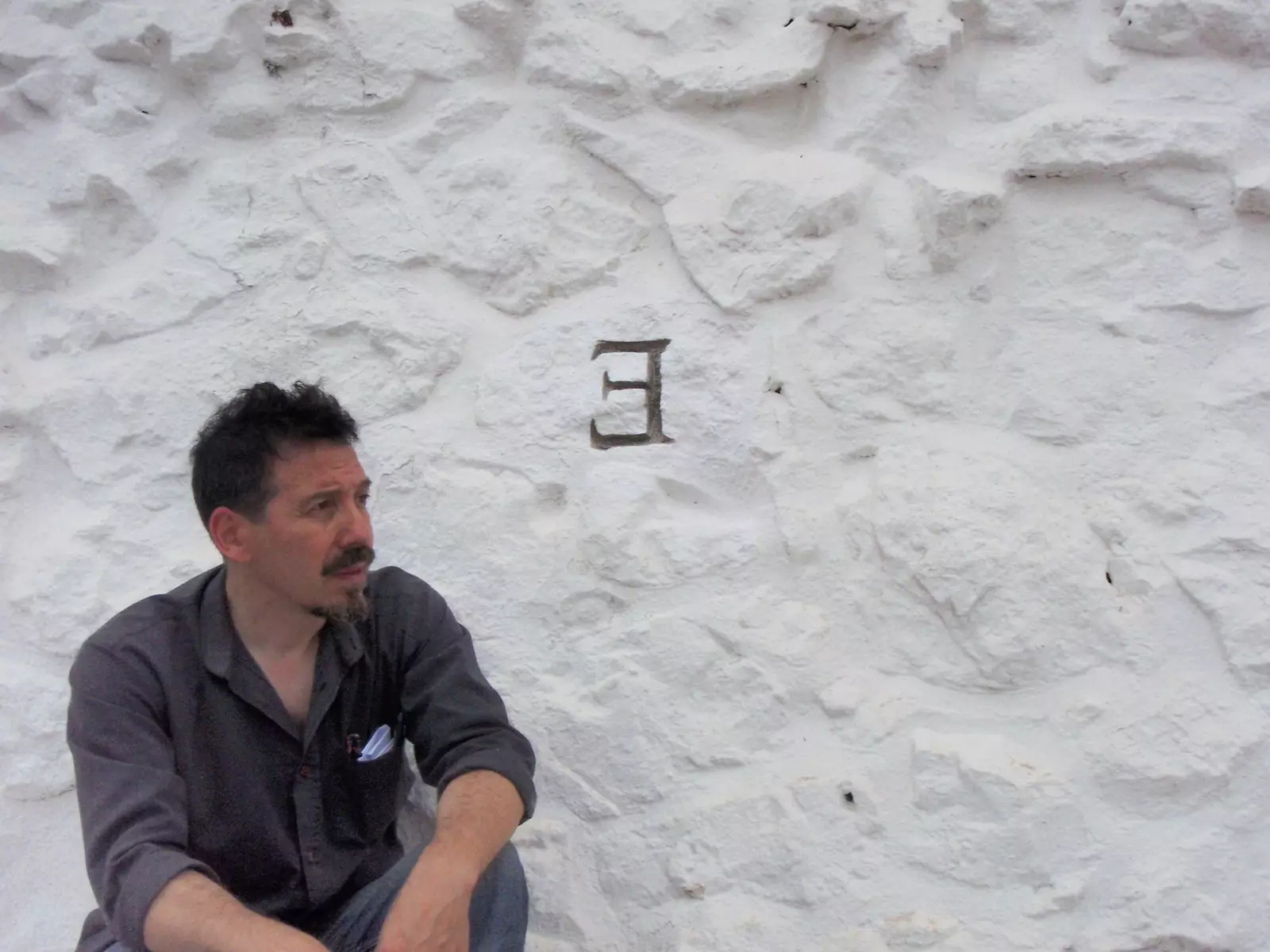
The artist Ricardo Calero approaches his work from silence and slowness.
Ricardo was born in Villanueva del Arzobispo, "one of the gateway towns to the beautiful Sierra Cazorla, in Jaén, a place I long for”. When he was not yet a year old, his parents moved to Zaragoza. “There I have been trained, soaking up that austere, noble and prudent land, while being able to 'touch the sky' In one breath, if necessary. Lucky to be able to love and feel loved in two territories at the same time”.
In the year 2004, the Fuendetodos-Goya Foundation suggested that he do a reinterpretation of Nonsense of Goya, which gave rise to a series of works that he carried out in the same town. For four months, Ricardo went up and down from Zaragoza, to work on the engravings He – donated 75 in two series – and finally in 2006 he decided to move.
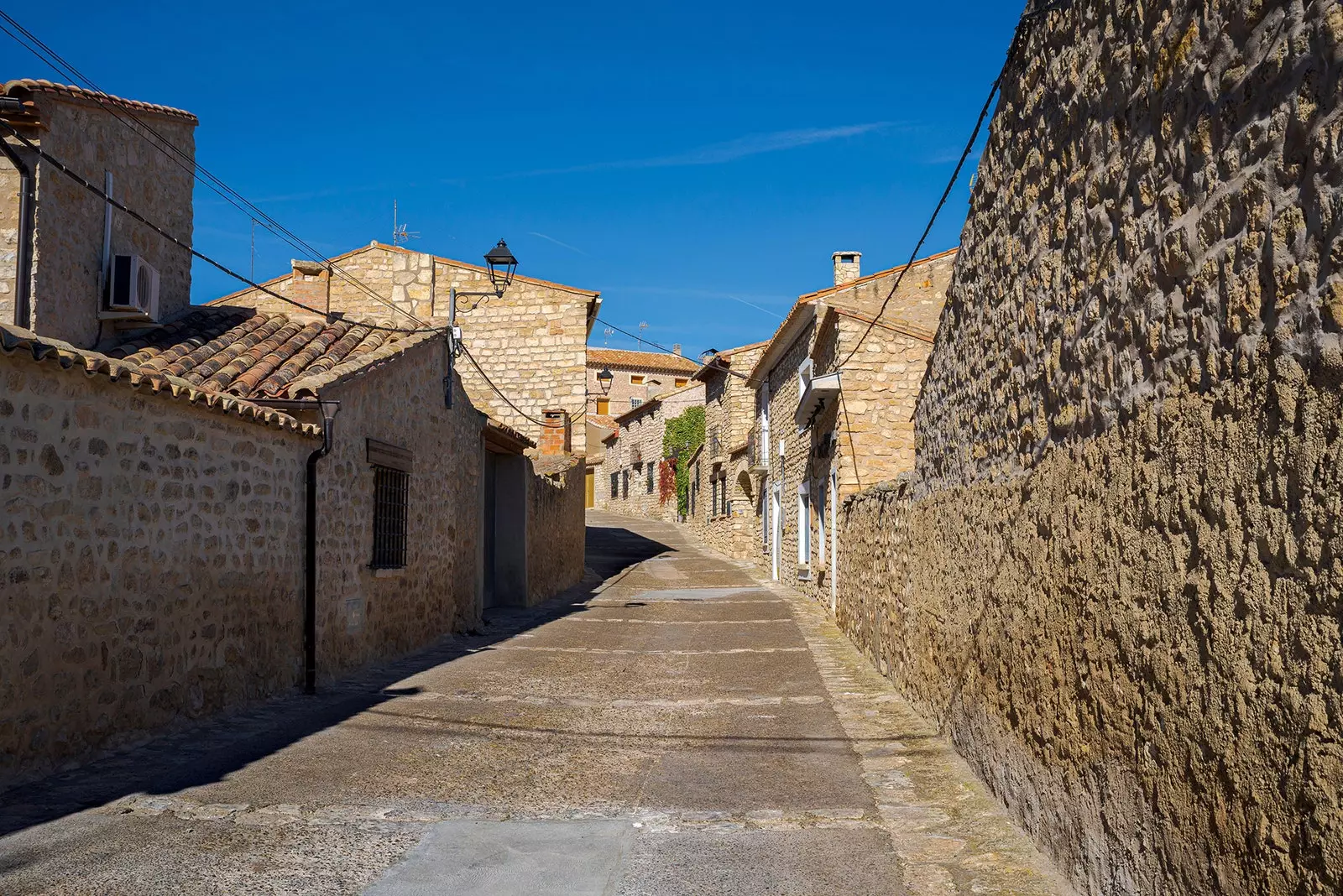
Traditional architecture in the streets of Fuendetodos.
“I needed to change studies and, on one of my trips to Fuendetodos, when I stopped by to say hello the museumI found a house in ruins that was for sale”, he recalls for Condé Nast Traveler. “During the time I was working there I had fallen in love with the town, with the silence, with the light of its skies and its horizons, so after a major restoration today is the study of my life. I hope so”, emphasizes the artist of Andalusian origin, but 'Aragonese at heart'.
“I feel integrated into the life of the town, very comfortable”, he tells us. In 1984, Calero decided to put aside teaching – something he took so seriously that it absorbed almost all his time – to devote himself fully to experimentation and research. "I decided to take a chance."
Do you lead a lonely life in Fuendetodos? “Here yes, but I travel a lot. For 28 years, he has worked with a gallery in Germany, another in Switzerland, Canada, Madrid, Barcelona… ”. The topography of the town is almost the same as in Goya's time, Ricardo tells us, highlighting the presence of a Roman quarry from which rocks were extracted for the Pilar basilica in Zaragoza and that is also the reason why the houses of the town are mostly made of stone.
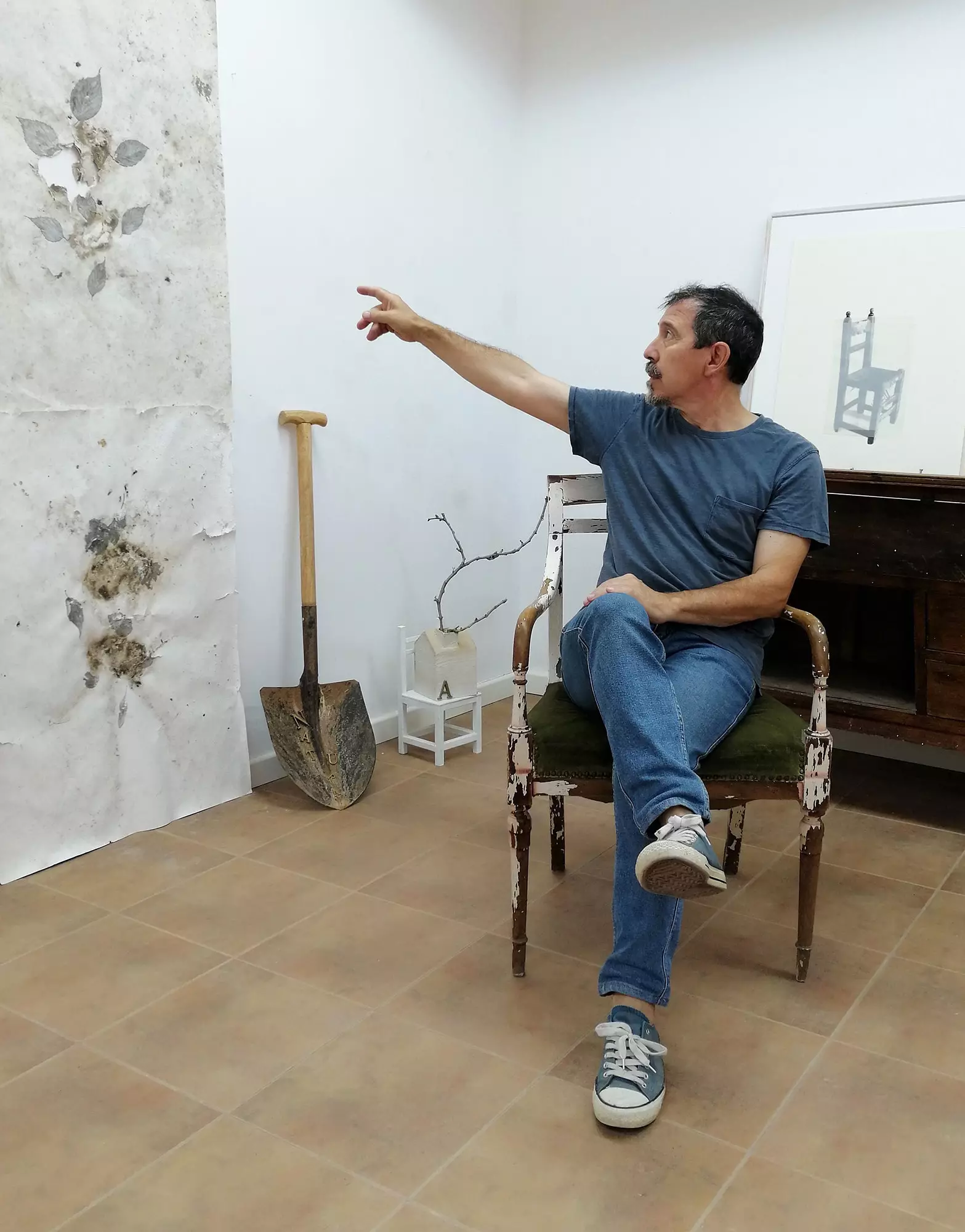
The artist Ricardo Calero in his studio, in Fuendetodos.
IN THE FOOTSTEPS OF GENIUS
Goya is and has been the greatest influence on him? "Goya interested me, of course, he has always persecuted me in some way", This sculptural-trained artist tells us that he has been delving into and combining other disciplines for years.
And the series of coincidences is curious: “My old studio was in the old Goya street in Saragossa, in the old town. Years later, a university professor saw Goya's house in Fuendetodos collapse and he asked a few artists for some works to auction them and get it rehabilitated. At that time the institutions were being formed, the town was poor. A very important amount of money was taken out that was used to restore the house and that was the embryo of the Goya House Museum.
However, he points out, there is no direct influence from Goya in the materialization of his work. “My world is another, but there is in that footprint, in that influencing the wounds of society, which Goya brilliantly transmitted to us. The roughness and wildness of the place where Goya was born, with its beauty, encourages the search for the essential”.
Ricardo Calero explains to us that his first training is as a sculptor, and that he has felt the influence of classics that go from Leonardo or Michelangelo to more current ones such as Rodin, Brancusi, Henry Moore, Marcel Duchamp and John Berger.
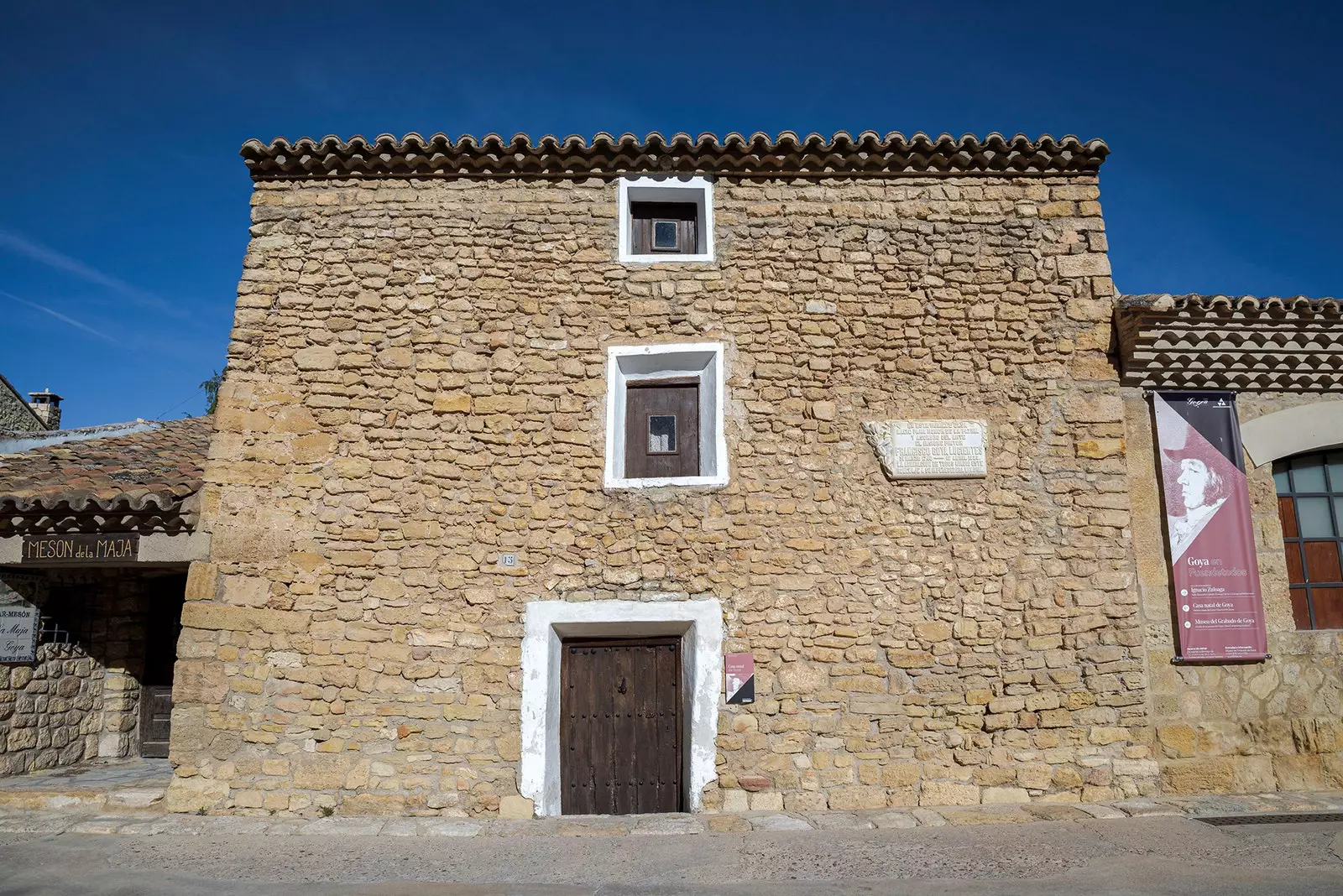
House where Francisco de Goya was born.
In the town is, as we said, the Goya House Museum, the place where the great Spanish painter was born, who was built at the beginning of the 18th century. It can be visited together with the Zuloaga exhibition hall.
Also, a few steps away, is the Engraving Museum, opened in 1989, where Goya's graphic work is exhibited and everything related to engraving techniques. Last Easter, despite the pandemic, more than 1,500 people visited Fuendetodos, coinciding with the commemoration of the 275th anniversary of the birth of his most illustrious countryman, including D. Felipe and Doña Letizia.
Ricardo himself tells us that he has noticed in recent months, perhaps as a result of that visit by the King and Queen, a slight change in the type of visitors, now more varied.
“Before there was a tourism of about 20,000 people (per year) related to art, high school students and university students”.
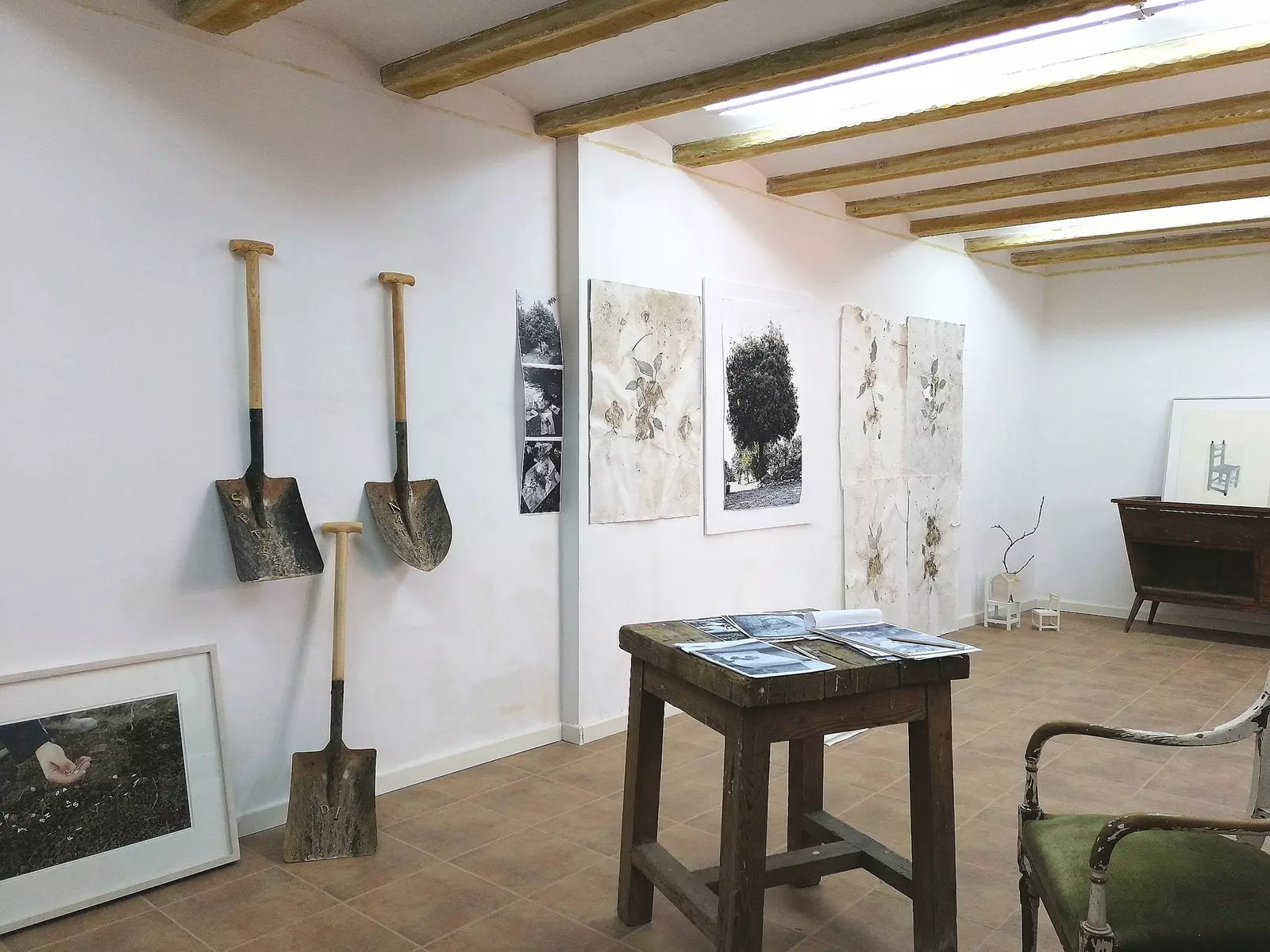
Studio and workshop of the artist Ricardo Calero in Fuendetodos.
A WORK CONNECTED TO THE LANDSCAPE
Calero's work deals with nature, territory, culture and sustainability. “After a first stage of training and experimentation, my work focused on reflections on art and society, based on two keys that unify my methodology and that I call 'natural interior' and 'natural exterior'".
“The ‘natural interior’ alludes to works that address the territory of intimacy, bringing together emotions and presences… We are also nature. The 'exterior natural' refers to interventions on concrete places in the open air, where I use the earth as my workshop, and thought, light, air, the passage of time and destiny, they are essential elements for the works to germinate”.
“This artistic gaze –he explains– leads me to a search commitment where the research process is constant and in which the phenomena of nature, as well as the transience of existence or the elusiveness of memory are a consubstantial part of my projects”.
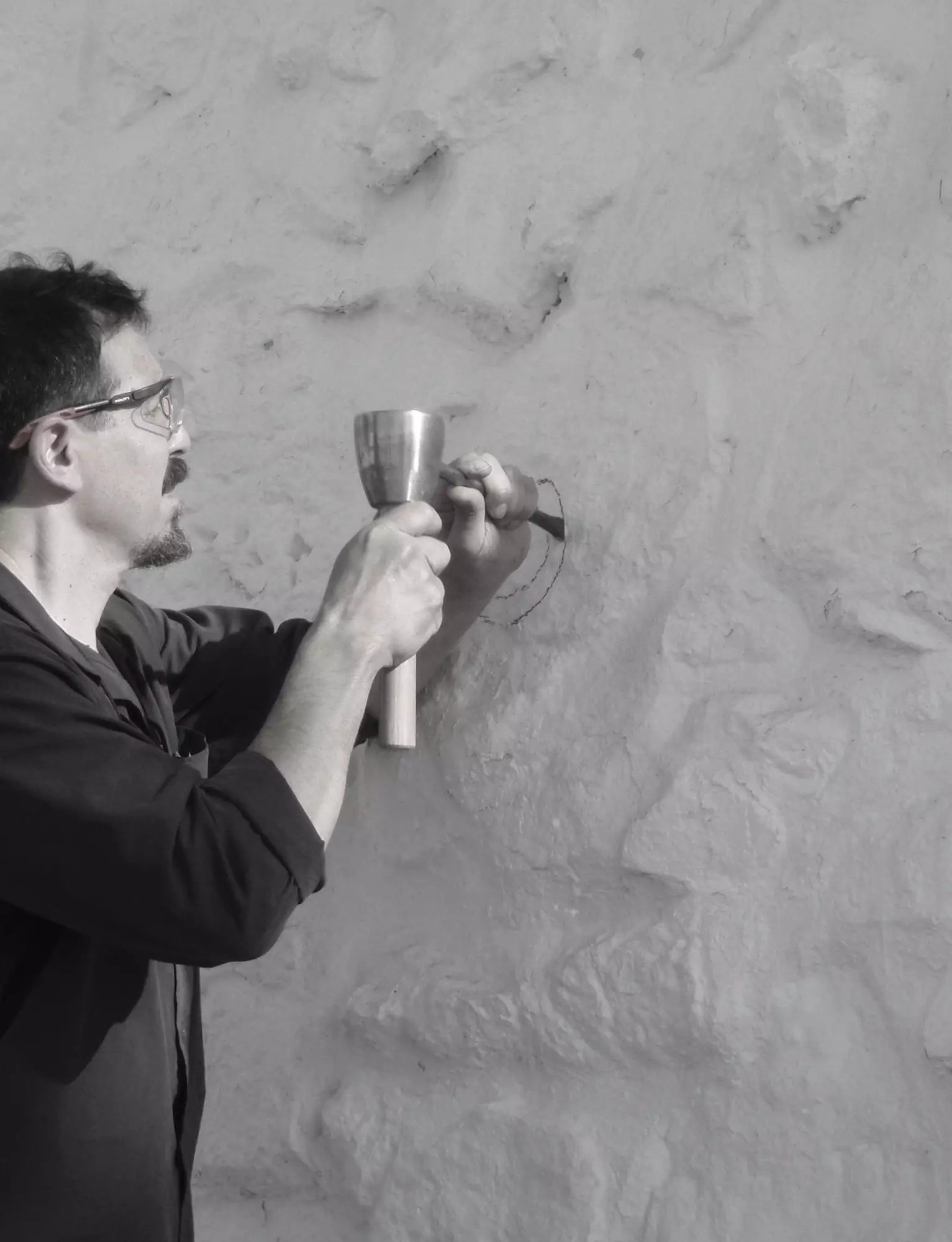
In Ricardo Calero's work there is always something that leads to the landscape. In the image, intervention in Sagunto.
He has always defined himself as a sculptor but, for decades, there are no longer watertight compartments. “That is why when working with ideas, I always look for the discipline, technique and material that I think can best convey that idea. I mainly work in the fields of sculpture and installations, as well as drawing, engraving, photography or video”.
What is Calero pursuing with his works? Is there an implicit and necessary dialogue in the act of exhibiting? “More than pursuing, I offer that necessary dialogue with others. To expose is to expose oneself, and it only makes sense if there is an intercommunication with the Other, whatever it may be and where each one extracts what he needs”, he answers.
The artist, who works by projects –“sometimes I am with several at the same time, which extend over time, which allows me adapt and intervene with one or the other depending on the place, the season of the year, as well as the methodology and priority of the project”– has just installed seven works that are part of the exhibition Metaphysics of fragility, at the Vallpalou Foundation.
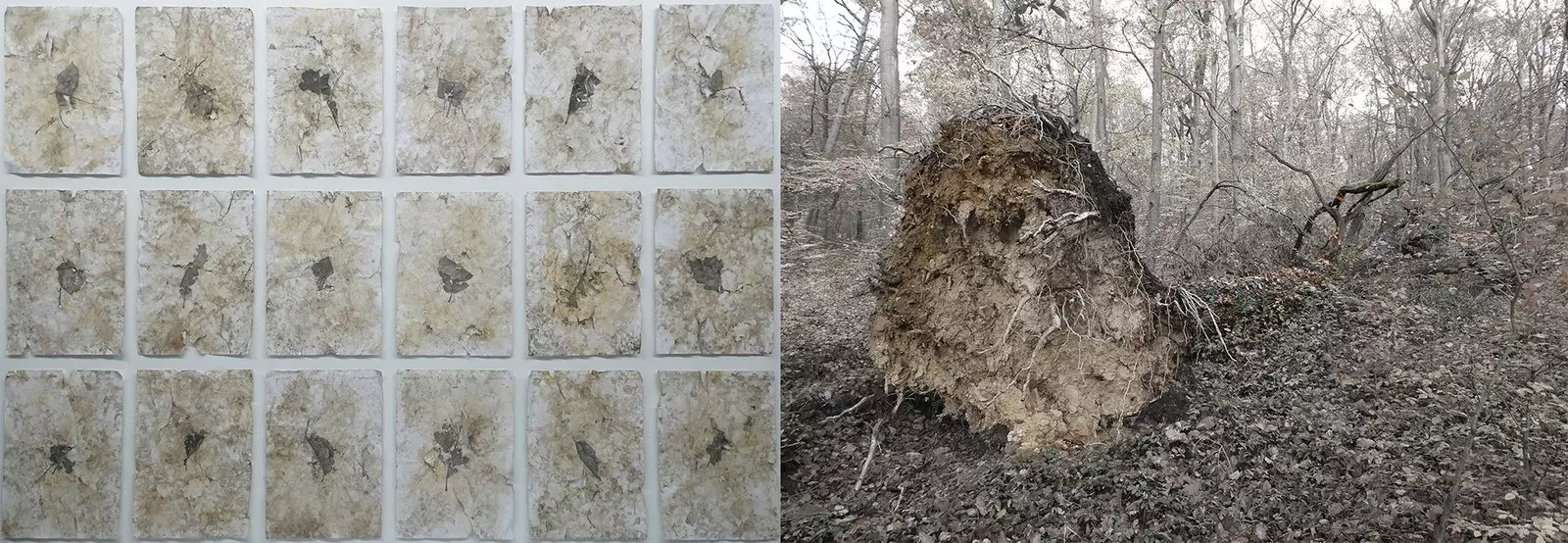
Diptych of drawings and photography Memoria del Taunus, by Ricardo Calero.
“I have also finished the selection of works that will shape the installation Dreams of yesterday and today, a work carried out between 2001 and 2012, which deals with migration, identity and borders, and that will be presented in Madrid in December. On the other hand I am finishing the pre-assembly of the project Florid Park Garden, made, through drawing and photography, a dialogue with nature in the garden of the Lázaro Galdiano Museum, which will be presented in the same museum at the beginning of next spring.
Subsequently he will travel to Italy to assemble the installation feeling of nature, a work of 'natural exterior' started in 2015 in Il luogo della natura, which will be presented in mid-2022 at the opening of the Paradise Museum of Joseph Beuys, in Bolognano.
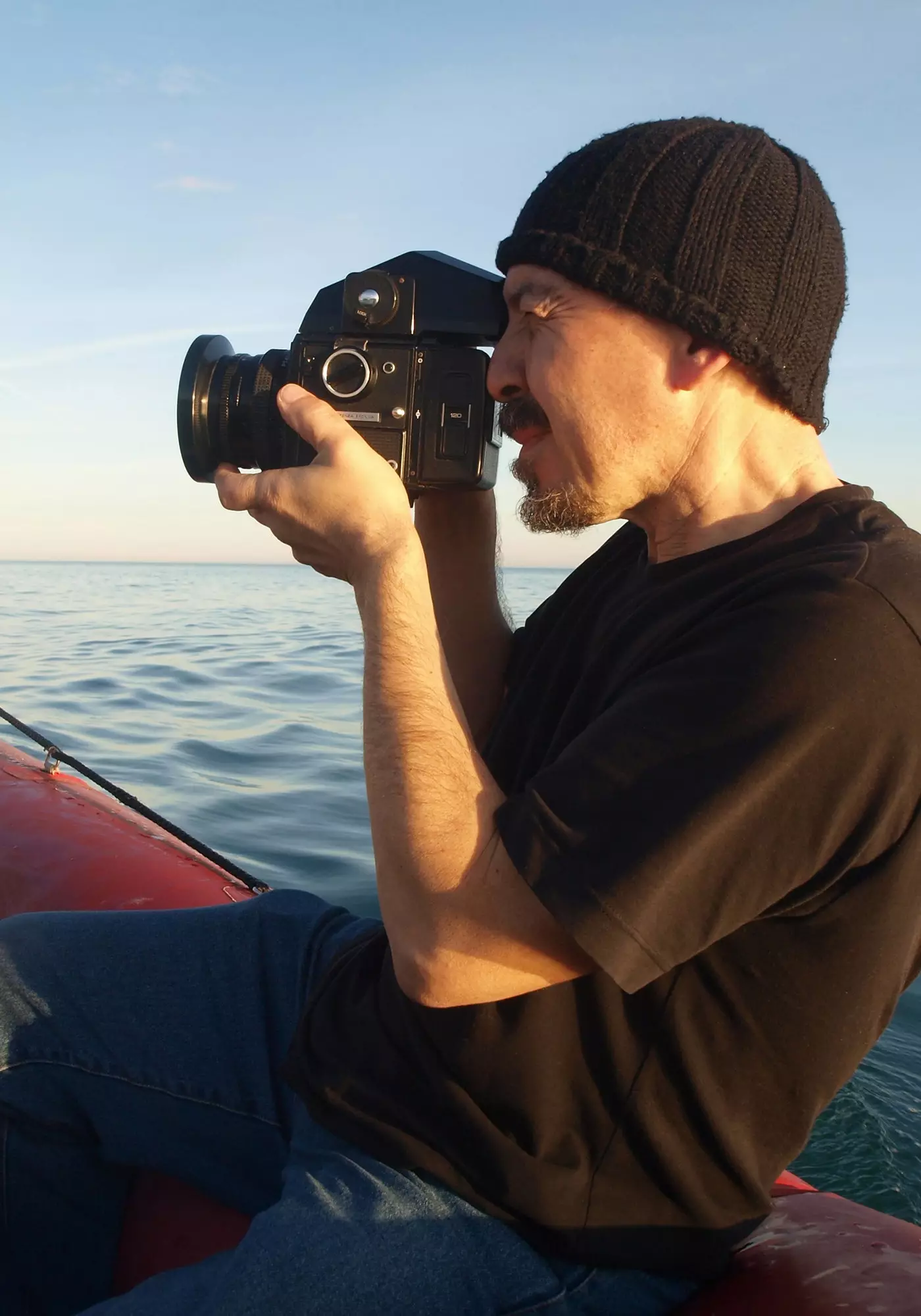
Action 'Dreams in the sea', on the border of the European continent with Africa.
ART IN MOTION: A VERY TRAVELER ARTIST
Travel greatly influences Calero's work. “Not only because some of the ideas come in that time of displacement, where the "daily routine" is abandoned, but an important part of my trips coincide with the work proposals in situ, with what it means the enrichment of these encounters with other cultures, and where I always try to take days to discover the soul of those places”.
Calero has personally presented his work in Washington, Venice, Paris or the colonial city of Cuenca in Ecuador, as well as in the great park and other natural spaces of Bad Homburg in Germany, among others. “I remember beautiful experiences, for several years, of the walks through the beautiful landscapes of Canada in autumn and winter, on the occasion of my works and exhibitions in Montreal".
"Also in the Dominican Republic, on the occasion of the realization of the project Art as a tool to create development, discovering some of the poorest places in the west of the country, but a great human and natural beauty”.
"Or the little village of Quincy at the foot of the Alps, where in its surroundings I carried out some actions of 'natural exterior' and I was able to meet and develop a good friendship with my admired John Berger”.
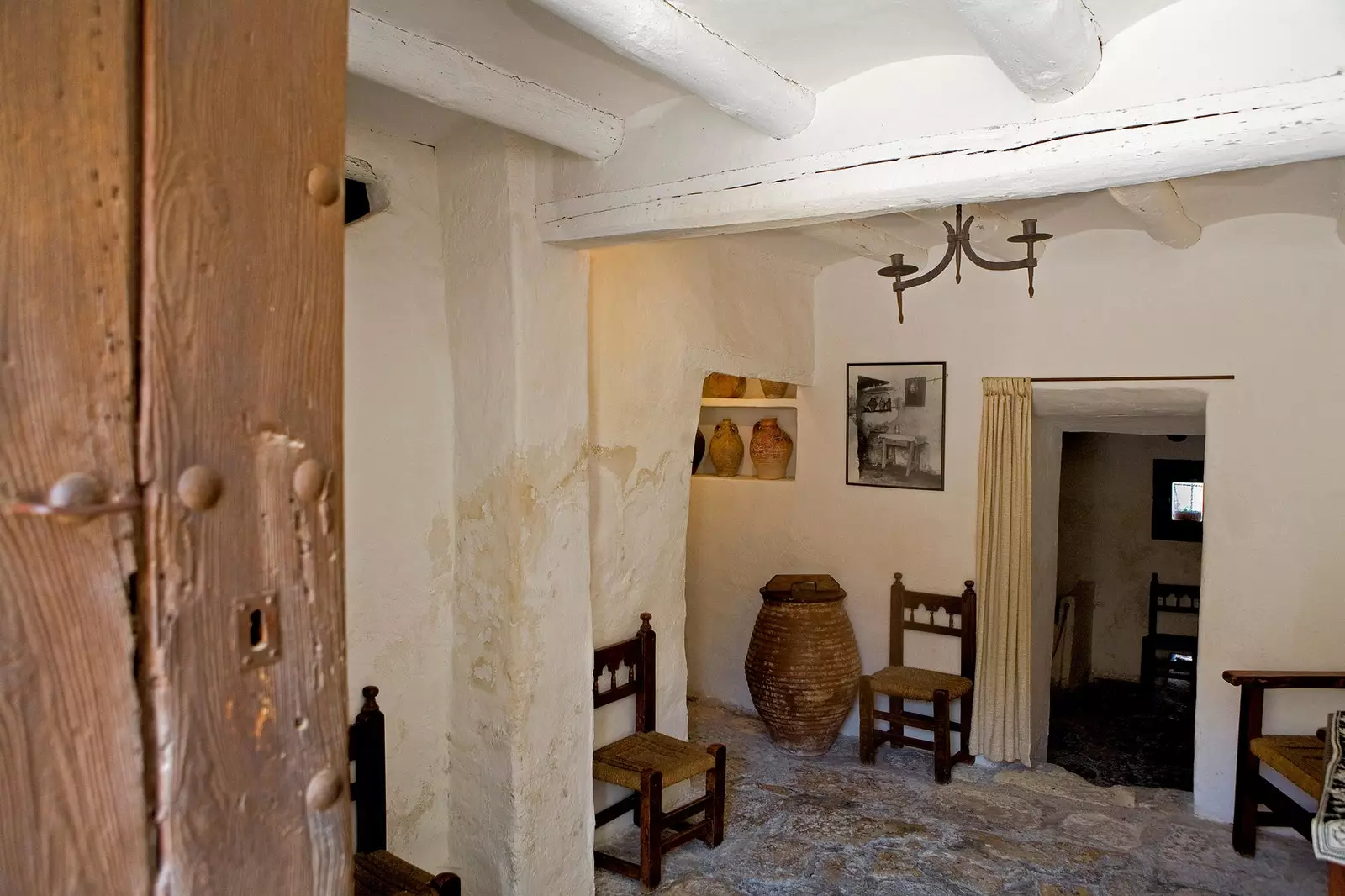
Interior of the Goya House Museum in Fuendetodos.
What would you say is the current situation of art in Spain (and in Aragon in particular)? “In Aragón, interesting public and private attempts are being made, although at the moment they are heroic, since we came from stages of quite precariousness. We know that one thing is art, creativity, in which Spain has always been an important potential, and Another thing is the national and international dissemination of this potential, which is still too weak compared to countries of our environment”, he replies.
"On the other hand, in the society in which we live everything is interconnected, and the world of art is no exception, so the current situation is being very hard, and more in some regions than in others, where resisting is living by chance. It is necessary, now more than ever, to understand, defend and commit to the values of art in our society”.
